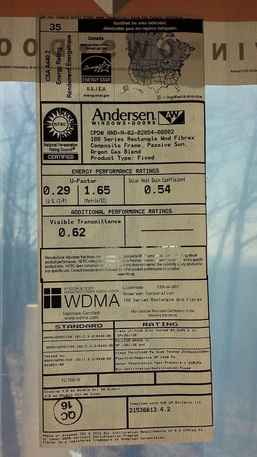Unfortunately, Andersen Windows did not offer their Passive Sun high SHGC glass in the 100 Series. Based on our cost and payback analysis, we decided to use the Andersen 100 Series windows anyway since they are constructed with a maintenance-free composite material and very cost effective.
The main reason for the exclusion is that the IECC Building Codes do not permit high SHGC glass in our part of the country, which makes building a passive solar house more difficult.
Recently, however, Energy Star Version 3 has provided an exclusion for passive solar designs. The exclusion is detailed in section 13.e. This is very important news for anyone building a passive solar design.
- Fenestration utilized as part of a passive solar design shall be exempt from the U-factor and SHGC requirements, and shall be excluded from area-weighted averages calculated using a) and b), above. Exempt windows shall be facing within 45 degrees of true South and directly coupled to thermal storage mass that has a heat capacity > 20 btu / ft3xoF and provided in a ratio of at least 3 sq. ft. per sq. ft. of South facing fenestration. Generally, thermal mass materials will be at least 2 in. thick.

This is a huge breakthrough because we can now get a durable, low-cost window system with truely excellent high SHGC glazing.
We were very fortunate to work with Mike Korney from ABC Suppply. They have offices and distribution centers around the country so we were able to work with Mike face-to-face here in Chicago and have the windows delivered to their distribtion center in Marietta, Ga.
The windows have arrived and the large fixed units have an SHGC of .54 (which is awesome).
As a side note, the Builing Codes are several years behind the new ENERGY STAR standard. We met with our county Building Commissioner to get a waiver based on the new standard.

 RSS Feed
RSS Feed